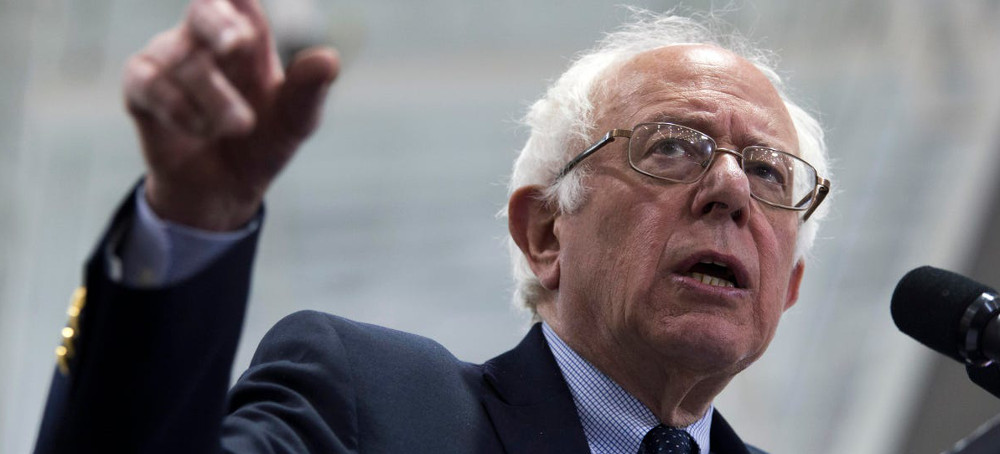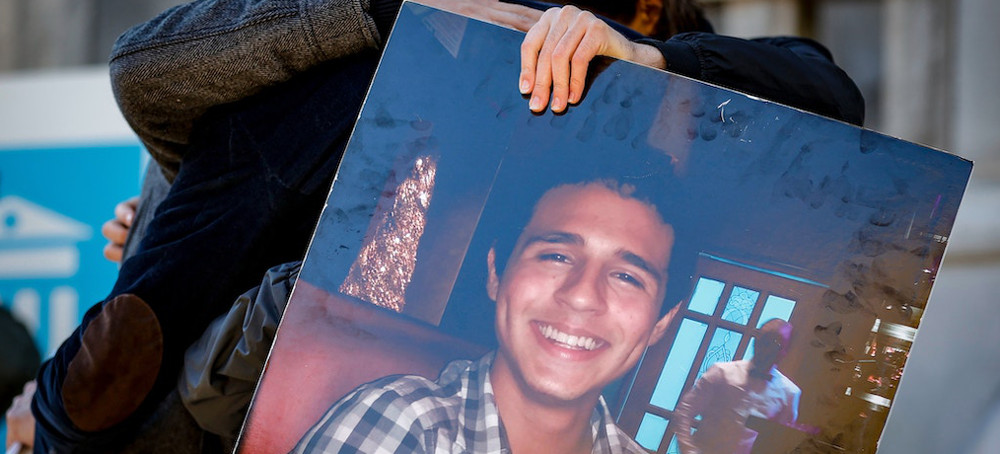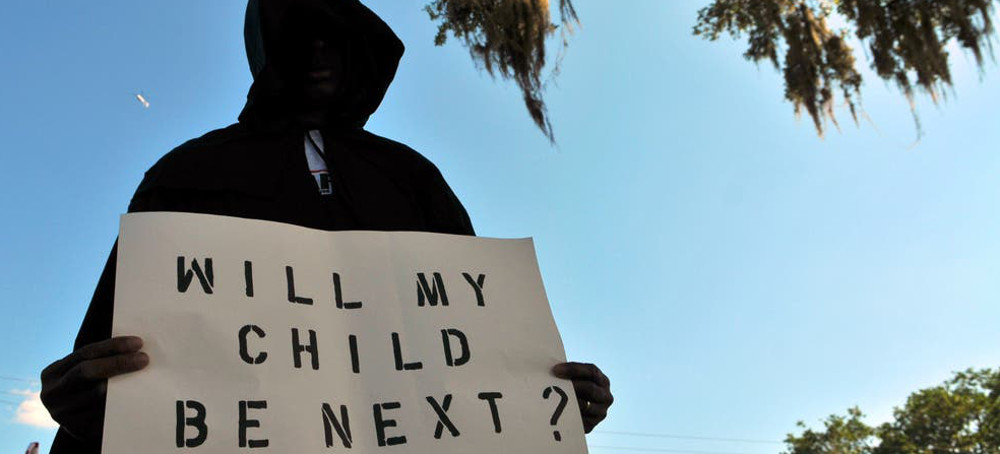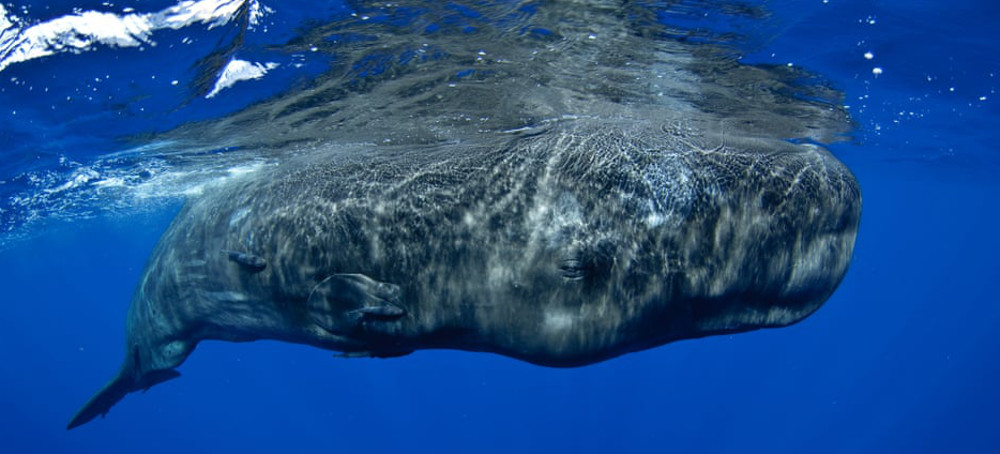Live on the homepage now!
Reader Supported News
The great national threat of the moment is … a film about environmentalism?
Rolling Stone has obtained an FBI alert issued earlier this month warning that the fictional film “How to Blow Up a Pipeline” could inspire real-life terrorist attacks on energy infrastructure. The nation’s premier domestic law-enforcement agency’s bulletin was one of at least 35 missives from at least 23 separate federal and state entities — a veritable alphabet soup of angst — issuing dire warnings about a commercial film’s threat to the nation’s fossil-fuel infrastructure. Since its release, there appear to have been zero attacks on the mass network of pipelines that carry oil and natural gas around the country, powering much of American life while also slow-cooking the planet.
“The film has potential to inspire threat actors to target oil and gas infrastructure with explosives or other destructive devices,” says the April 6 bulletin from the FBI’s Weapons of Mass Destruction Directorate. The bulletin — blasted out to police, government, and others involved in protecting infrastructure — urges personnel to keep an eye out for suspicious activity. Such activity, the FBI wrote, ranged from people attempting to access infrastructure facilities to discrete or unusual use of cameras or video recorders, sketching, or note-taking aimed at learning about infrastructure operations.
What followed was a two-week-old-and-counting deluge of warnings about the danger of How to Blow Up a Pipeline, a dramatized, fictional version of a nonfiction book by the same name that was published nearly three years ago.
A Bureau of Alcohol, Tobacco, Firearms and Explosives alert was even more vague. “The consensus amongst law enforcement and the private oil sector is that this film may motivate attacks or disruptions on critical infrastructure throughout the country,” the ATF wrote in a March 21 bulletin that was widely circulated earlier this month and obtained by Rolling Stone. No specifics on those threats were provided. (Earlier this month, The Intercept reported that the Kansas City Regional Fusion Center had sent a warning of its own.)
Infrastructure attacks are real. In January, two men were arrested for a December attack on power substations in Washington state that left thousands without electricity and caused $3 million in damage, according to the Justice Department. But the supposition that someone would be inspired by a fictional film to engage in real-world attacks strains credulity, says a senior U.S. government official involved in protecting pipelines and other infrastructure: “If someone wants to attack a pipeline, they’ll attack a pipeline. They don’t need to be inspired by a movie to do so.”
How to Blow Up a Pipeline does not, in fact, provide instructions on how to blow up a pipeline, as a senior weapons of mass destruction intelligence analyst with Maryland’s state Coordination and Analysis Center’s anti-terrorism division noted in an April 14 email.
“The movie definitely does NOT provide a step-by-step guide to construct a device, it’s much more focused on the radicalization process and why these subjects choose to conduct the attack,” the analyst wrote in a missive titled “How to Blow Up A Pipeline— Movie Review from IED Perspective.”
Of a trip to view the film in Baltimore, the analyst wrote: “I took a bunch of notes (70% chance someone submits a see something/say something tip on me).”
How to Blow Up a Pipeline director Daniel Goldhaber tells Rolling Stone the film is “a work of fiction that addresses one of the real world’s most pressing issues by telling a story about eight characters who believe that destroying an oil pipeline is an act of self-defense. That audiences have so strongly connected with it only demonstrates the gravity of the climate crisis and reinforces our urgent need to address it.”
Goldhaber declined to discuss the slew of law-enforcement agencies warning about the dangers of his film.
The FBI declined to comment on its bulletin about a consumer product whose chief economic function is to bring people within purchasing proximity of high-priced popcorn. “While our standard practice is to not comment on specific intelligence products, the FBI regularly shares information with our law enforcement partners to assist in protecting the communities they serve,” the agency says in a statement. “The FBI always encourages members of the public to be vigilant and report anything they consider suspicious to law enforcement.”
The film may likely be harmless, but civil-liberties advocates and other experts say telling police nationwide that moviegoers could turn into terrorists might have serious and damaging consequences.
“On the whole, these documents reflect law enforcement’s extremely biased approach to threat assessment, which has chronically under-reported the threat of right-wing violent extremism and focused unnecessarily on environmental movements,” says Jake Wiener, counsel for the Electronic Privacy Information Center, a nonprofit research group that advocates for privacy, free speech, and human rights.
“Several documents also fit a long-running pattern of using unrelated instances of far-right violence to justify surveilling and criminalizing left-of-center political organizing,” he says. “This kind of low-quality analysis is common and dangerous because it can prime police to overreact to nonthreatening activities and justify wrongful surveillance.”
A touch of pipeline hagiography creeps into some of the intelligence memos. “The United States pipeline infrastructure is part of the country’s transport system. This system enables the safe movement of extraordinary quantities of energy products to industry and consumers, literally fueling the country’s economy and way of life,” reads a Southern Nevada Counter Terrorism Center security note.
Some defended the need for the alerts, which were widely circulated via the Department of Homeland Security’s intelligence-sharing platform. A senior DHS official said in a statement to Rolling Stone: “Films, books, video productions and their distribution channels are protected by the U.S. Constitution. With certain films and books that seem to promote violence and destruction to our critical infrastructure, we urge that our stakeholder partners practice greater vigilance and action on the tactics, techniques and procedures that we know produce improvements in physical security. What is most important is that we take steps to enhance security posture and continue to monitor conditions for specific and credible threats.”
But Mike German, a fellow with the Brennan Center, said the memos could prompt law-enforcement officers to take overzealous action against environmental groups.
“These reports fit an unfortunate pattern of intelligence products that are designed to raise fears among law-enforcement officials, but provide no useful information for police officers to detect actual threats,” he says. “What reasonable action could a police officer receiving these reports take but to increase surveillance of people and groups that protest the oil-and-gas industry?
“The FBI has responsibility for investigating environmental crimes, but too often sees itself as the protector of industry rather than protector of the public interest,” German continues. “The FBI and ATF should use their resources to solve actual crimes, not to monitor what movies are available.”
READ MORE  Vermont senator Bernie Sanders dismissed 2024 GOP presidential candidate Nikki Haley's proposal for "mandatory mental competency tests" for politicians aged 75 and older. (photo: Susan Walsh/AP)
Vermont senator Bernie Sanders dismissed 2024 GOP presidential candidate Nikki Haley's proposal for "mandatory mental competency tests" for politicians aged 75 and older. (photo: Susan Walsh/AP)
Sanders, alongside Sen. Elizabeth Warren and Rep. Jimmy Gomez, is introducing new legislation targeting heirs who receive over $3.5 million. Called the For the 99.5 Percent Act, the proposal would levy a 45% tax on estates that are worth $3.5 million, and a 65% tax on estates worth over $1 billion. It's similar to legislation that Sanders has proposed in several iterations over the last few years, and it comes as some Republicans seek to roll back the estate tax entirely.
"It is unacceptable that working families across the country today are struggling to file their taxes on time and put food on the table, while the wealthiest among us profit off of enormous tax loopholes and giant tax breaks," Sanders said in a press release.
The amount of money exempt from the estate tax has increased significantly over the last two decades, according to the Tax Policy Center. In 2001, only the first $675,000 of an inheritance was tax-free, and that cutoff went up to $1 million by 2002. By 2009, it was at $3.5 million; after rising steadily, the exemption pretty much doubled under President Donald Trump's 2017 tax package, going from around $5.5 million in 2017 to $11.1 million in 2018.
Now, for 2023, the estate tax exemption stands at just under $13 million, a large bump from around $12 million in 2022. As of 2019, the most recent year that the IRS has data on, just 0.08% of adult deaths were eligible for the estate tax. The Tax Policy Center similarly found that fewer than 0.1% of people who would die in 2020 would owe estate tax. And the estate tax rate only goes up to 40% on estates that are worth a million dollars more than the exempted amount.
Sanders' proposal also targets loopholes that the ultra-wealthy can employ to shield their assets from taxation, like dynasty trusts that don't incur estate or gift taxes when the family doles out money from a passed-down trust.
However, like Sanders' previous attempts to hike taxes on the rich, the proposal is unlikely to make it far. Even when Democrats held both chambers of Congress, centrist sentiment stymied proposed hikes on big corporations and closing loopholes for private equity investors. Now, with tax-averse Republicans holding the House, any legislation to hike rates is likely dead on arrival.
READ MORE  Family members of Manuel "Tortuguita" Terán embrace during a news conference in Decatur, Georgia, March 13, 2023. (photo: Alex Slitz/AP)
Family members of Manuel "Tortuguita" Terán embrace during a news conference in Decatur, Georgia, March 13, 2023. (photo: Alex Slitz/AP)
It looks like Manuel “Tortuguita” Terán was executed by firing squad — underscoring why we must stop the massive police training center.
Like clockwork, police officials claimed that Tortuguita shot first and hit a state trooper. In body camera footage that was later released — after police said none would be — one officer said that the cop had been shot by his fellow police. (Authorities dismissed the footage as speculation and said evidence did not support the remarks.) A previous, independent autopsy ordered by Tortuguita’s family found that the activist’s hands were raised when they were shot.
Then, on Wednesday night, DeKalb County Medical Examiner’s Office released its official autopsy report, which found no trace of gunpowder residue on Tortuguita’s hands. The young activist’s body was riddled with at least 57 gunshot wounds, including in their head, torso, hands, and legs. The medical examiner has ruled the death a homicide.
The abundance of evidence, including the government autopsy, doesn’t look like a group of police taking self-defensive action against a protester.
What it looks like is that the forest defender was executed by firing squad.
With so many gunshot wounds, the sheer brutality of Tortuguita’s killing is hard to fathom. Even if the autopsy report showed the activist had fired a gun, as police claimed, this would not have justified gunning them down in a storm of bullets.
Yet there is nothing unusual in police taking on the role of extrajudicial killers; attempts to baselessly blame the victim for their own demise are par for the course. It is this understanding that undergirds the struggle to stop the $90 million police training center from being built atop a huge swath of the Atlanta forest.
The militarized raid that led to Tortuguita’s death is precisely the sort of “counterinsurgency” police tactic that the facility would be dedicated to perpetuating. Tortuguita’s killing morbidly highlights the stakes of stopping Cop City. It is not an aberration when the work of policing is to administer violence in the service of capital.
In the long three months that it took for the autopsy report to be released — a delay that movement participants believed indicated efforts by the authorities to suppress information — cops have continued to attack the protest camp with violent raids and indiscriminate arrests. Forty-two people have been charged with domestic terrorism for their participation in the movement, with arrest warrants citing the flimsiest grounds, including protesters having mud on their shoes and the number for a legal support group scrawled on their arms.
There is no bodycam footage directly capturing the moments when cops pumped 57-plus bullets into the young activist’s body. No police have been charged in Tortuguita’s killing, though investigations are reportedly ongoing. Typical “bad apple” narratives — seeking to blame a few “bad” cops for the few police killings deemed unwarranted by our criminal legal system — are difficult to uphold when the killing appears to involve an entire firing squad participating in a coordinated raid operation.
Even if every shooter were convicted of murder charges, this would not constitute justice. Justice can only be achieved if the Atlanta Cop City and the violence it represents are stopped. Regardless of the lies law enforcement officials may spin next, Tortuguita’s execution was not policing gone wrong. It was simply policing — an institution beyond reform.
READ MORE  A man dressed in a hood holds up a sign saying "Will My Child Be Next?," during a protest march in Sanford, Florida, following the 2012 killing of Trayvon Martin. (photo: AP)
A man dressed in a hood holds up a sign saying "Will My Child Be Next?," during a protest march in Sanford, Florida, following the 2012 killing of Trayvon Martin. (photo: AP)
Josh Marcus reports on a growing body of laws making it easier to ‘shoot first and ask questions later’
Consider this month alone. In Kansas City, Ralph Yarl, a Black 16-year-old with dreams of pursuing a career in engineering, was shot at point blank range for ringing the wrong doorbell. A group of young cheerleaders in Texas were shot when one accidentally entered the wrong car in a grocery store parking lot. Kaylin Gillis, 20, was fatally gunned down in rural New York after mistakenly pulling into the wrong driveway. And Kinsley White, a six-year-old from Gastonia, North Carolina, was shot alongside her parents when her basketball rolled into a neighbour’s garden.
Experts say random acts of violence are made worse by so-called “Stand Your Ground” laws, provisions that the US Commission on Civil Rights once dubbed a “license to kill.”
"If this is the sort of thing where ‘stand your ground’ can be enforced, then every US postal worker, every Amazon delivery person, every pizza delivery person, every Girl Scout volunteer, anybody knocking on your door now becomes someone who’s subject to be shot," Kansas City Mayor Quinton Lucas said of the Ralph Yarl shooting in an interview on MSNBC.
Traditionally, under the law of self-defence, deadly force is considered a last resort, and people generally have a duty to retreat from a situation if possible before resorting to violence, according to Professor Kami N Chavis, director of the William and Mary Law School Center for Criminal Justice Policy and Reform. At home, the “castle doctrine” often applies, meaning one doesn’t need to retreat from a deadly threat.
However, she told The Independent, in the estimated 35 states with explicit Stand Your Ground legislation or similar provisions, the law takes things one step further. In these (often Republican) states, the castle doctrine has been expanded and the duty to retreat eliminated in venues well beyond the home. Fatal force can be used not just to stop imminent threats of harm, but also prevent burglaries, or in states like Florida, even to stop an unarmed person from entering an unoccupied vehicle.
“I am opposed to stand your ground laws because they don’t allow people to de-escalate their situations,” Professor Chavis said.
The first such law passed in Utah in 1994, and they’ve since spread across the country with the backing of millions of dollars from the gun lobby and the political clout of conservative-leaning advocacy outfits like the American Legislative Exchange Council, according to Ari Freilich, state policy director of the Giffords Law Center, an advocacy group attempting to reduce gun violence.
Despite this concerted and highly successful effort, the laws, he said, weren’t even proposed as a solution to any well-defined problem with public safety or criminal justice law.
“There was no real problem that they were solving,” Mr Freilich said. “There’s not a person sitting in jail that they’re pointing to saying that their use of force should’ve been justified.”
Rather, Mr Freilich said, Stand Your Ground came about as the gun industry was trying to drum up new sales with the decline of traditional money-makers like hunting.
“It took them some time. They have now developed a new market. That market was fear-based,” he said.
The new business plan revolved not around selling hunting rifles, but rather high-powered semi-automatic pistols and assault weapons for a newly ascendant notion of “self-defence,” playing on racialised fears about the rise of terrorism and urban violent crime.
It’s hard to believe, but in the 1970s the National Rifle Association was once in favour of restrictions on personal gun use, a reaction to calls from groups like the Black Panther Party for Black people to arm themselves in self-defence. Now, the NRA is a key backer of legislation in the half of US states where it is legal to carry concealed weapons without a permit.
The combination of numerous guns, relaxed standards for self-defence, and poorly trained but highly armed individuals has caused a powder keg in states with Stand Your Ground laws.
Numerous studies suggest such laws drive up homicide and gun violence rates. In Florida, whose NRA-backed, 2005 Stand Your Ground law has inspired numerous immitators across the country, the state experienced a 32 per cent increase in gun homicides after the law was in place.
Stand Your Ground cases also invite personal, and often racist, subjective judgements into lethal situations, according to experts. First, an individual’s perception informs when they think they’re under threat, then a jury must decide whether that was reasonable.
According to the evidence, this scheme often ends up creating a shadow right to self-defence, where white people claiming to be under threat from Black people are trusted at greater rates than when the situation is reversed.
In Stand Your Ground states, 45 per cent of cases with a white shooter and a Black victim were deemed justified, compared with just 11 per cent of cases with a Black shooter and a white victim, according to a 2021 Giffords report.
“If we’re going to have these laws, they seem to have some racial inequities built in,” Professor Chavis said. “That may not be a problem with that law, that’s a societal issue. If we know that and we study that, we ought to try and remedy that.”
If not, she said, there will be more cases like Ralph Yarl’s, where an individual’s perception causes violence with lifelong effects.
“Black adults deliver mail and DoorDash and Uber Eats and have car trouble... This law is just another avenue to perpetuate racial disparities and to allow people to unfortunately exercise their racial prejudices implicitly or explicitly in very dangerous ways,” she added.
“Your very being cannot be a threat.”
And yet it seems that may be exactly what happened in Ralph Yarl’s case.
The teen was sent to pick up his younger brothers from a friend’s house, and suspect Andrew Lester, an 84-year-old white man, shot him within seconds of the youth approaching his front door. The man, now charged with assault, told police he was “scared to death” by the sight of the child on his doorstep.
Legal experts like Professor Chavis say Mr Lester, who has pleaded not guilty, doesn’t have a particularly strong self-defence case – even with all the subjectivity the law allows, touching a doorknob isn’t a lethal situation to most people – but Stand Your Ground law has a way of defying common sense notion when it comes to the concept of self-defence.
In 2012, for example, the killer of Trayvon Martin, a 17-year-old Black boy, was acquitted in part under the law. Local resident George Zimmerman called local police to report a “real suspicious Black guy” wearing a hoodie in his neighbourhood. Even though 911 operators urged Mr Zimmerman not to pursue the youth, he did so anyway, and killed the teen in an altercation that followed.
More recently, in 2020, there was the case of Ahmaud Arbery in Georgia. Two armed white men chased the Black man down in a truck, thinking he had trespassed at a local construction site, cornering him before eventually fatally shooting him. Police initially declared the conduct a justified homicide under Georgia’s Stand Your Ground law.
If self-defence can include an interaction one deliberately provoked, there is little that seems to fall outside the concept.
There are some signs, however, that despite the proliferation of guns into everyday life, and laws which make their use less likely to face scrutiny, some officials believe self-defence and Stand Your Ground have their limits.
In California, legislation is moving forward requiring people to pass a written safety test, with questions about safety and de-escalation, before acquiring a licence to carry weapons in public.
The Ralph Yarl shooting is being investigated as a hate crime.
In a country with more than one mass shooting per day and more firearms than people, barring dramatic changes to gun laws and US society more broadly, the next random shooting seems less a matter of if, but when.
Beyond just what’s on the law books, Mr Freilich of the Giffords Center says Stand Your Ground is reflective of a larger cultural message.
“That has been interpreted, that has been heard by some people, as an unambiguous encouragement for people to use force in more situations and more impunity, to shoot first and ask questions later,” he said.
READ MORE  The student reportedly said in the email that Campbell made repeated sexual comments and 'grabbed me around my neck.' (photo: AP)
The student reportedly said in the email that Campbell made repeated sexual comments and 'grabbed me around my neck.' (photo: AP)
The student reportedly said in the email that Campbell made repeated sexual comments and “grabbed me around my neck.”
Rep. Scotty Campbell was the vice chair of the House Republican caucus until Thursday, when News Channel 5 in Nashville published an explosive report that an ethics committee had found that Campbell violated the chamber’s policy against workplace discrimination and harassment.
Campbell at first attempted to deny the claims, but after the accusations came to light—and Campbell seemingly inadvertently revealed to the outlet that he’d been accused of harassment by a second intern—the Republican resigned from his seat.
Though the subcommittee found him guilty, rules of the Tennessee General Assembly allowed for no reprimand aside from placing the memo in Campbell’s personnel file, according to News Channel 5.
Campbell vocally supported the effort to expel three Democratic legislators earlier this month for bringing “disorder and dishonor” to the House, after they protested for gun reform following the Covenant School shooting. Two young Black lawmakers, Reps. Justin Pearson and Justin Jones, were expelled; a white representative from Knoxville, Gloria Johnson, was not.
After Jones and Pearson were expelled—they’ve since been re-appointed to the seats by local governments in Nashville and Memphis, respectively. Campbell told a local TV station in northeast Tennessee: “This was not a race issue, this was a behavior issue.”
The ethics committee memo finding Campbell guilty of harassment was dated March 29, one day before the Tennessee Three’s protest.
The intern, who was unnamed in News Channel Five’s story, reportedly told a family member in an email that after Campbell saw her and a teenage intern entering her nearby apartment, he later “made comments about how ... he was in his apartment imagining that we were performing sexual acts on one another and how it drove him crazy knowing that was happening so close to him,” the email said, according to News Channel 5.
“I uncomfortably explained that that was not happening, and he insisted that he knew it was and asked me to tell him about it,” the intern said in the email, the outlet reported.
The student also reportedly said in the email that when she went to Campbell’s apartment to return a wrench, he made repeated sexual comments and advances toward her and eventually “grabbed me around my neck,” after which she left and blocked his number.
@vicenews “You cannot separate the reality that race played in who was expelled,” Rep. Justin Pearson told VICE News @Alexis. Last week, Pearson and Rep. Justin Jones were reinstated. #tennessee #tennesseethree #justinpearson #justinjones #nashville ♬ original sound - VICE News
The state also reportedly spent money to relocate the intern away from the building where Campbell also had an apartment and housing her in a Nashville hotel until her internship ended. Legislatives officials cited confidentiality, however, and refused to say just how many taxpayer dollars were spent, according to News Channel 5.
The last Tennessee lawmaker to be expelled before Pearson and Jones was Republican Jeremy Durham in 2016, for sexual misconduct.
Campbell made national headlines earlier this year when he asked, during a hearing on a bill making drag shows, if a “bra-and-panties” wrestling match would be banned under the bill. He ultimately voted for the bill.
In Texas, a far-right who’s led a similar effort and called drag shows “groomer events” was accused by a Republican legislative staffer of having an “inappropriate relationship” with an intern in an internal complaint, according to the Texas Tribune. Rep. Bryan Slaton allegedly invited the underage intern over to drink; later, a full version of the complaint alleged that he’d had “sexual relations” with the intern.
Slaton’s attorney said in an email to the Texas Tribune, which first reported the complaint, that he was aware of “outrageous claims circulating online by second-tier media that make false claims against Representative Slaton.”
No disciplinary action has been taken against Slaton thus far, but on Wednesday, the House passed an amendment that would make a felony for a “public officer” to give an underage person alcohol. Slaton voted for the legislation.
READ MORE  A Russian Su-34 bomber takes off for a training mission in the Krasnodar region of Russia, Jan. 19, 2022. (photo: Vitally Timkiv/AP)
A Russian Su-34 bomber takes off for a training mission in the Krasnodar region of Russia, Jan. 19, 2022. (photo: Vitally Timkiv/AP)
An Su-34 air force plane flying over the Russian city of Belgorod had an "accidental discharge" of its payload on Thursday, according to Russia's Defense Ministry.
The large resulting explosion created a 65-foot-wide crater in a central city street, damaging buildings and injuring three people. Belgorod Gov. Vyacheslav Gladkov said on the Telegram social messaging app that no one was killed.
Belgorod and other border regions have come under occasional attacks during Russia's invasion of Ukraine. Russia blames the strikes on Ukraine, which doesn't claim direct responsibility for them.
But Thursday's explosion in Belgorod — with a population of 340,000 about 25 miles from the Russia-Ukraine border — was reported to be more powerful than what residents had previously experienced.
Street camera footage posted on Telegram showed the initial impact of the bomb Thursday evening, sending a massive fireball skyward just moments after several drivers had passed through an intersection.
Images later posted online showed nearby buildings with shattered windows and overturned furniture. Several parked street vehicles appeared heavily damaged and covered with debris. The impact launched one car onto the roof of a nearby shop.
Local authorities later told residents from several damaged buildings to evacuate to local hotels.
Several Russian military bloggers — an increasingly influential voice amid the war in Ukraine — initially speculated that Russian air defenses had shot down a Ukrainian-fired rocket.
Even state television appeared initially reluctant to embrace the news that the damage had been caused by one of the Russian military's own bombs.
On the Rossiya 1 channel, anchor Nikolai Zusik said the military had used a "modern weapon" that allowed Russian units to "eliminate extremists" near the front lines "from a minimal distance." He appeared perplexed by the text he'd just read from the teleprompter.
Russian planes have caused damage in their own country before. Last October, an Su-34 jet crashed into an apartment building in the southern Russian border town of Yeysk, killing more than a dozen people in their homes.
READ MORE  A giant sperm whale, whose breath can stimulate the production of carbon-storing phytoplankton. (photo: iStock)
A giant sperm whale, whose breath can stimulate the production of carbon-storing phytoplankton. (photo: iStock)
New research shows how species boost the amount of carbon stored in their ecosystems – and why protecting them is vital
It isn’t just these three. We are beginning to learn that many species have complex effects on their environments that change the amount of carbon stored by their surrounding ecosystems – ultimately affecting climate change. When the population of wildebeest in the Serengeti plummeted due to disease, they no longer grazed as much, and the uneaten grass caused more frequent and more intense fires. Bringing back the numbers of wildebeest through disease management has meant fewer and smaller fires. And the Serengeti has gone from releasing carbon back to storing it.
These are examples contained in a stunning new paper just published in Nature. It makes the case that animals cause ecosystems to be more effective in storing carbon, through their eating, moving, trampling, digging, defecating and building. Looking across a range of different studies, it concludes that wild animals account for only 0.3% of the carbon in the total global biomass, but can cause anywhere between 15% and 250% difference in how much carbon is stored in a given ecosystem.
We already knew that so-called “nature-based solutions” need to be part of any effective strategy to tackle climate breakdown. Reducing emissions is not going to be enough – we need to use the immense power of nature to remove carbon from the atmosphere and lock it up. But this new research carries important lessons for how we pursue these nature-based solutions.
First, nature works. Specifically, the complex mechanisms that nature has developed are startlingly effective in ways we do not yet fully understand – and we destroy them at our peril. It may well be sensible to try to develop new technologies to capture carbon, but it is definitely not sensible to ignore the proven ways of doing so that nature already gives us. We would do well to be a little less enamoured of our own ingenuity, and a little more respectful of nature’s.
This means avoiding the urge to go for quick and simple fixes of plant monocultures to sequester carbon, devoid of animals. The current emphasis for nature-based solutions is on the plants – restoring mangroves, kelp and seagrasses, for example. They are important, but can only be part of the answer. The Nature paper uses the example of the Arctic, where huge amounts of carbon is stored in the permafrost. Ensuring there are herds of large animals will help keep the carbon there, by compacting the snow, keeping the soil frozen. Restoring populations of reindeer, wild horses, musk ox and American bison is not a nice-to-have tangential to the main effort against climate change, but a key part of that effort.
Second, conservation works. We know that nature can recover when given the chance, and that animal populations can bounce back quickly. We know how to do it – it needs habitats to be protected, interests to be aligned with local communities and the conditions recreated for animal populations to return at scale. We now have numerous examples of conservation’s success, from the return of red kites in England to the recovery of tigers across much of Nepal and India.
This work is the purpose of the organisation I lead, the Zoological Society of London (ZSL). When I took this job, a small part of me worried that working on wildlife was a bit of luxury, given the enormity of the threat from climate change. We know now that the opposite is true. Understanding the role that animals can play in helping nature capture carbon has profound implications for how we do conservation.
We are moving away from the arid old model of conservation through segregation – separating nature from people in order to allow it to flourish. That simply isn’t enough. Instead, our focus is on helping wildlife and people co-exist, by supporting efforts to reduce conflict between them and working with communities who are vital to the health of their wild animals. This has long been the approach that ZSL has taken to conservation, and we know it works.
It was this approach that saw local communities set up their own sanctuaries for pangolins on Palawan island in the Philippines, and it is this approach that is helping to identify conservation solutions for the protection of the critically endangered angel shark off the UK’s coastline. And it is just as true for cities as it is for the Serengeti – as our recent report explains, nature can help mitigate the impact of extreme weather in urban areas as well.
A world in which wildlife thrives is also a world that has the resilience it needs to withstand and mitigate the climate crisis. Our future is inextricably intertwined with the wellbeing of the world’s wild animals. If we want to save ourselves, we need to do better at protecting them.
Follow us on facebook and twitter!
PO Box 2043 / Citrus Heights, CA 95611



No comments:
Post a Comment
Note: Only a member of this blog may post a comment.